| SOME DISCOVERY TRIPS AROUND THE MAS DE VEDEL |
|
|
About 10 minute drive to the north-west, Canet is a lovely village on your way to Clermont l’Hérault. You can swim in the river Herault at the entrance of the village, next to the bridge. |
|
|
At a 30 minute drive to the south-east lies Sète, the 2nd largest fishing harbour on the French Mediterranean coast. Entertainments in Sètes include :
The marshes of Thau (Etang de Thau) are famous for their oyster beds and mussel production. You will discover Languedocian cuisine in one the many fish and seafood restaurants in Maseillan, Mèze, Bouzigues and Balaruc (also a spa), along the coast. |
|
|
Cap d’Agde at the southern tip of the marshes is a busy seaside resort. |
|
|
Abbey of Valmagne Within a 10 minute drive to the south on Road D5, next to Montagnac, lies the Cistercian abbey of Valmagne. It is one of the best preserved in the area with a church dating from 1257, a cloister and a lovely fountain. Furthermore, you may visit a medieval garden, a herb garden, an orchard-cemetery, a beehive, and wine production and tasting, as well as listen to regular concerts. |
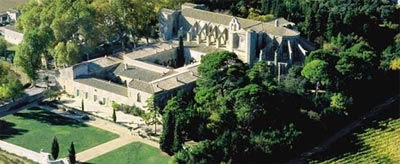 |
|
Pézenas This is a 20 minute drive south on N9. Molière, who lived there from 1650 to1657, wrote some comedies. Mansions from the XVI, XVII and XVIII-th centuries, jewels of these flourishing periods, can be admired in downtown Pézennas. 1st Sunday of July : a wooden yearling covered with the royal colours leads a street proccession. |
|
|
To the North-West of Pézenas, in Roujan, lies the Abbaye de Cassan. A Romanesque Chapel is converted as centre for oenology and tourism : ancient recipes, cooking classes and herb sorting and tasting. It is also the Templar Order of Wine and Olive Tree headquarters. |
|
|
Between Narbone and Perpignan, 25 km in the south of Narbonne on N9 lies Sigean. La Réserve Africaine : 300 hectares of garrigues and marshes to accommodate african animals : lions, giraffes, elephants, snakes and pink flamingoes. |
|
|
One hour and a half drive in the south west lies Carcassone. The city walls and its 40 towers are the most impressive and complete architectural ensemble from the middle ages in France. A must : the medieval tournaments during summertime. |
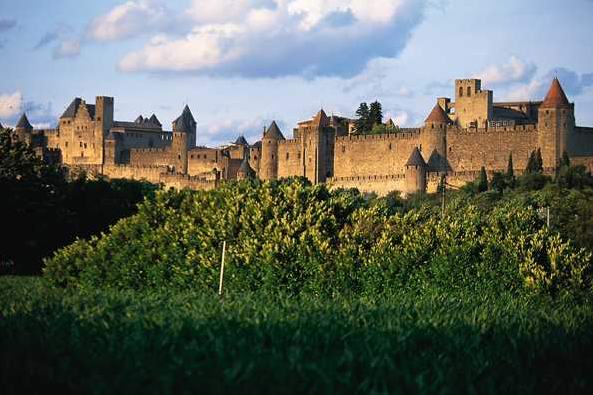 |
|
Within a 30 minute drive to the north-west lies the Cirque de Mourèze. 8 km of lunar landscape dominated by chalky columns (it looks like the Dolomites). To the opposite lies the lake of Salagou. It's indeed a fishermen's paradise and a great spot for water-sports fans(canoeing, sailing, windsurfing) and bikers (VTT). With its brick red banks, the scenery around the lake is a real wonder. |
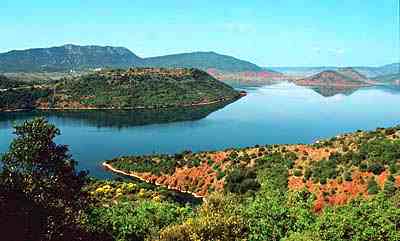 |
|
One hour drive away to the north lies St. Guilhem le Désert. Straight from the middle ages, this village is a Unesco World Heritage Site. It was a stopover for the pilgrims to St Jacques of Compostela, who named it ”the rose in a mountain nest”. The Abbey of Gellone is a Romanesque abbey (11th and 12th century). Gellone was a friend of Charlemagne and founded its primitive abbey. The place is a wonder. Beginning of July : baroque Music Festival On your way to St Guilhem, you may visit :
Reading : Patrick Moon "Virgile’s Vineyard - A year in the Languedoc Wine Country". |
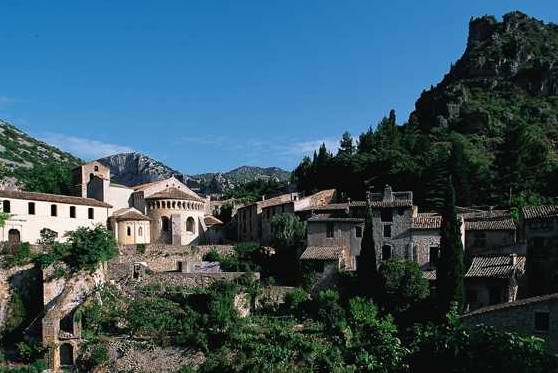 |
|
Within a 45 minute drive to the north-west lies Montpellier. A bustling city which doubled its population in 40 years and has 1000 newcomers each month ! A dynamic city which mixes traditional and new architecture, research centres, universities and the sun. It is also the largest city centre in France without cars ! Discover the old district Ecusson by foot, the Faculty of Medecine, famous since the Middle Ages, the Languedocian museum in Jacques Coeur's mansion, Place de la Comédie, but also the futurist district : Corum, Antigone and the Esplanade de l’Europe. Movies, restaurants and festivals :
|
 |
|
La Camargue Within an hour and a half drive, you reach this specific area in the delta of the Rhone River, mostly made of marshes. Discover the Manades, farm breeding fighting bulls, by boat, by 4 wheel drives along the dirt roads, or on horse back. Zoology : pink flamingos and sea birds in the marshes. Aigues Mortes : once an ancient harbour, built and fortified by Louis IX for the First Crusade, the city nowadays lies several miles inland. Capital of the Bull Free Runs.
Visit by train or bus in 10 800 hectares of marshes and sea salt harvesting system. You will see a white mountain of pure salt about 400 000 tons! |
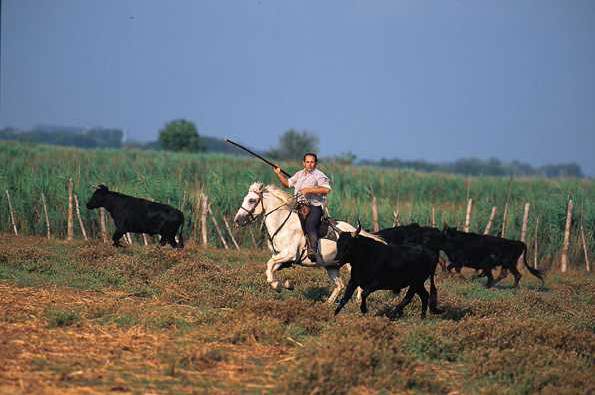 |
|
Nîmes One hour drive north. Nîmes is the former capital of Gaule, under the Roman Empire. You may visit les Arènes and la Maison carrée (small Roman temple). |
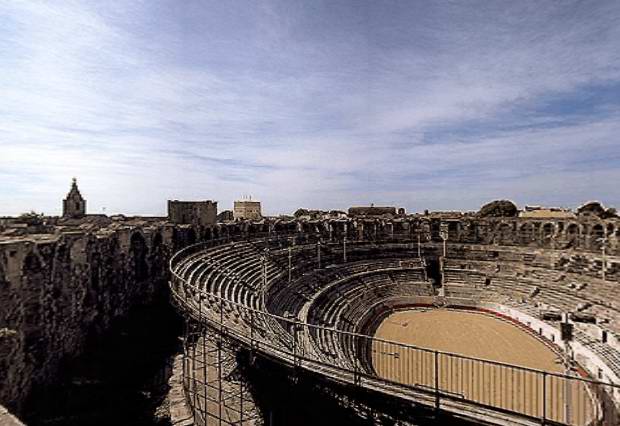 |
|
Between Nîmes and Avignon, 25 km away from Nîmes lies the Pont du Gard. This Roman aqueduct was built in 50 BC to supply Nîmes with water. The bridge has been classified a Unesco World Heritage Site in 1985. |
|